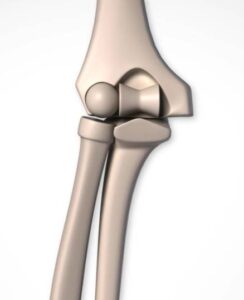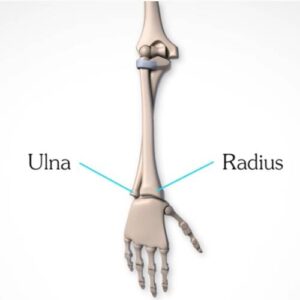6 Types Of Joints: Human Anatomy
The joints of the skeleton define the motion of the body and its limitations.
This article is about the types of joints in the human body.
Joints that are fibrous and cartilaginous hardly move, and some like the connection of the two pubic bones they don’t move at all.
Synovial Joints:
They have varying shapes, but the important thing about them is the movement they allow. Joints determine what position our bodies can take.
We learn them to invent poses. And we learn the limits to stretch the limits.
There are 6 types of synovial joints are Hinge, Pivot, Ball & socket, Ellipsoid, Saddle, and Plane.

Let’s go through them one by one,
Hinge Joint:
The hinge is a very simple joint. It allows movement only on one axis. Its structure prevents rotation sideways.
The head of one bone wraps around the cylindrical head of the other, allowing a very stable rotation to the upper side.


The hinge joint allows flexion and extension.
The best example of it is the elbow, it only does flexion and extension.
So, if the elbow only allows flexion and extension, how is it that we are able to twist the forearm?
Well, let’s take a look at the next joint.
Pivot Joint:
The pivot joint also allows rotation at only one axis. However, it rotates along the long axis.

A cylindrical bone fits into a ring of bone and ligament, with the radioulnar joint just below the elbow.

The cap on the radius bone fits nicely into this notch on the ulna bone.

Ligaments complete the ring, holding the bone in place and allow the radius only to rotate inside of it.

The result on the forearm is what we call pronation and supination.


During pronation, the base of the radius rotates over and around the head of the ulna. The ulna stays relatively still.

Remember, the hinge joint at the elbow prevents the ulna from twisting. So all of that twisting happens at the radius.
And by the way, the distal joint of the ulna and radius is also a pivot joint.
The combination of the pivot at the top and at the bottom creates that twisting motion for pronation and supination.
Ball & Socket Joint:
The ball and socket is the champion of all joints. Its structure is just like how it sounds. A ball inside of a socket.


This simple and effective structure allows it to move in all axes- flexion/extension, abduction/adduction, rotation, and circumduction.
The two ball and socket joints of the body are at the hip and the shoulder.


The hip has a deep socket, which gives it stability but limits some range of motion. The shoulder joints have a shallower socket, which gives it a greater range of motion but takes away some stability. Maybe that’s why a dislocated shoulder is so common.
Ellipsoid Joint:

The ellipsoid joint is very similar to a ball and socket. However, the ligaments and their oval shape prevent rotation. But it still has the ability to rotate on two axes, which allows flexion/extension, abduction/adduction, and circumduction.
Circumduction is just a combination of all the others in a circular motion. The ball or oval head also slides inside the socket.
When it rotates along the wider plane, you can see how it pops out too much from the socket. So, it slides in back to the center.
A great example of an ellipsoid joint is the wrist, aka radiocarpal joint. The group of carpal bones rotates inside the socket of the radius.
Saddle Joint:
The saddle joint is similar to the ellipsoid but the rotation is limited mostly because of the bone structure. The structure of the saddle is very interesting.


Both bones have a concave and convex surface. Convex means the surface sticks out, like a hill. Concave means the surface curves in, like a hole or a cave. The concave plane of one fits on the convex plane of the other.

So, this unique structure allows the joint to flex, extend, abduct, adduct, circumduction, and very slightly rotate.
An example of a saddle joint on the body is the carpometacarpal joint of the thumb.
Plane Joint:
It’s basically two flat surfaces, one on top of the other.


These surfaces can glide or rotate. They usually come in groups, like the carpal bone of the hand and the tarsal bone of the foot. The ligament holds these bones together but might allow some rotation and gliding.

Another plane joint is the acromioclavicular joint. That’s the one between the clavicle and acromion process of the scapula.

When we elevate the shoulder, the angle in here will adjust to keep the scapula vertical.








